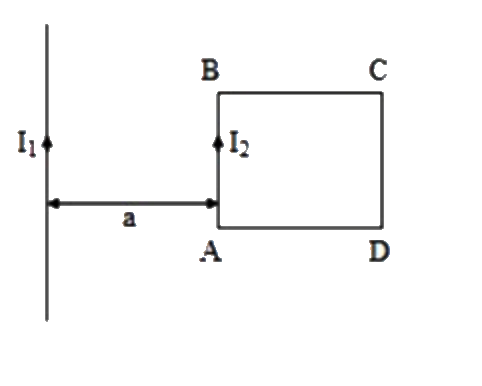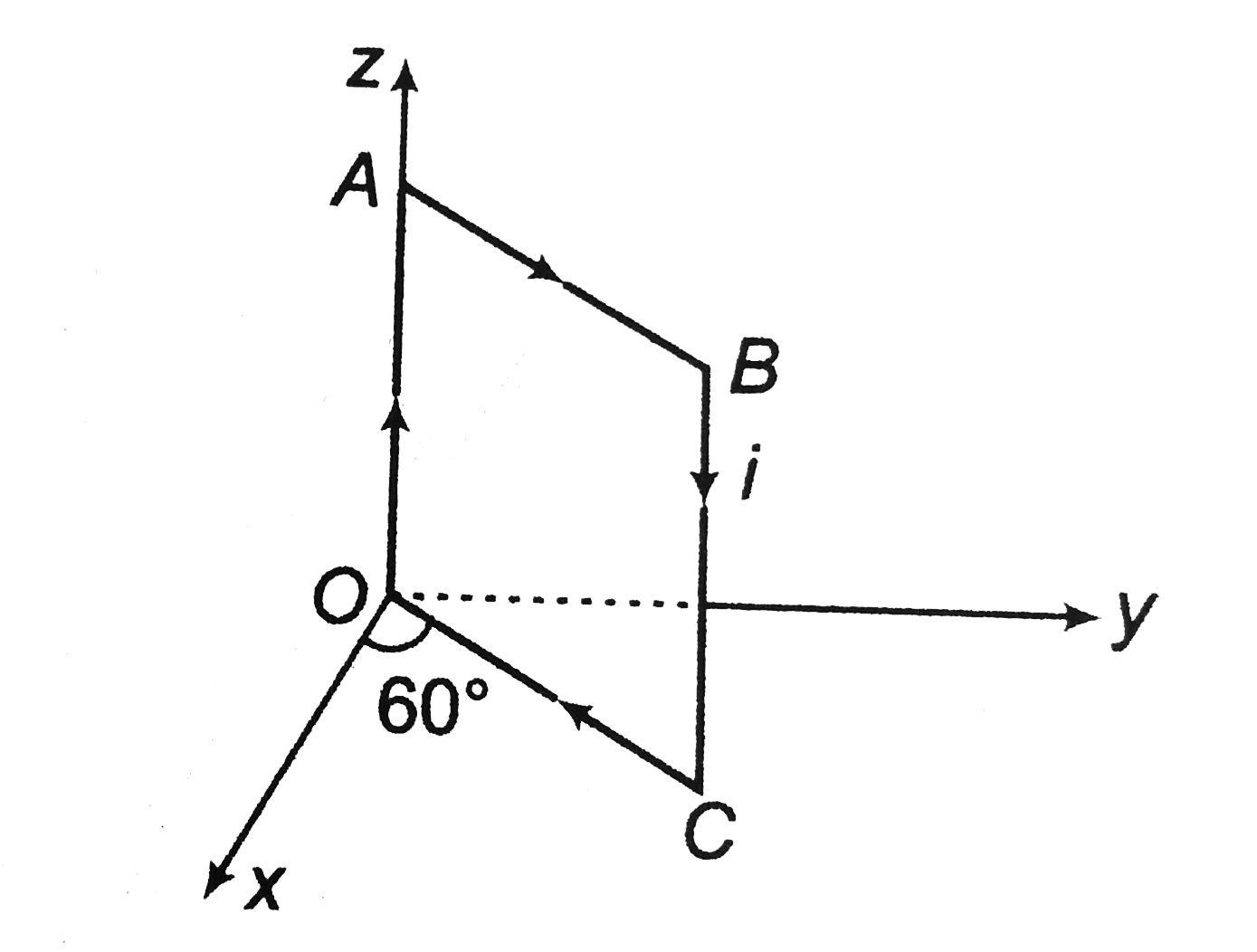A small square loop of wire of side is placed inside a large square loop of wire of side . The loops are coplanar and their centre coincide. What is the mutual inductance of the system ?
The correct Answer is:A
To find the mutual inductance M of a small square loop of wire of side l placed inside a large square loop of wire of side L (where L≫l), we can follow these steps:
Step 1: Understanding the Setup
We have two square loops:
- A large square loop with side length L.
- A small square loop with side length l placed inside the large loop, such that their centers coincide.
Step 2: Magnetic Field at the Center of the Large Loop
When a current I flows through the large loop, it generates a magnetic field at its center. The magnetic field B due to a single side of the square loop at the center can be calculated using the formula:
B=μ0I4πdsin(θ)
where d is the distance from the wire to the point where we are calculating the field, and θ is the angle subtended at that point by the wire.
For a square loop, the angle θ at the center from each side is 45∘. The distance d from the center to the midpoint of a side of the large loop is L2.
Step 3: Calculate the Magnetic Field Contribution
The total magnetic field at the center due to all four sides of the large loop can be calculated as:
B=4⋅⎛⎝μ0I4πL2sin(45∘)⎞⎠
Since sin(45∘)=1√2, we have:
B=4⋅⎛⎝μ0I4πL2⋅1√2⎞⎠=2√2μ0IπL
Step 4: Calculate the Magnetic Flux through the Small Loop
The magnetic flux Φ through the small loop is given by:
Φ=B⋅A
where A is the area of the small loop. The area A of the small loop is l2, so:
Φ=(2√2μ0IπL)⋅l2
Step 5: Calculate the Mutual Inductance
The mutual inductance M is defined as:
M=ΦI
Substituting the expression for Φ:
M=(2√2μ0IπL⋅l2)I=2√2μ0l2πL
Final Result
Thus, the mutual inductance of the system is:
M=2√2μ0l2πL
We have two square loops:
- A large square loop with side length L.
- A small square loop with side length l placed inside the large loop, such that their centers coincide.
When a current I flows through the large loop, it generates a magnetic field at its center. The magnetic field B due to a single side of the square loop at the center can be calculated using the formula:
B=μ0I4πdsin(θ)
where d is the distance from the wire to the point where we are calculating the field, and θ is the angle subtended at that point by the wire.
The total magnetic field at the center due to all four sides of the large loop can be calculated as:
B=4⋅⎛⎝μ0I4πL2sin(45∘)⎞⎠
Since sin(45∘)=1√2, we have:
B=4⋅⎛⎝μ0I4πL2⋅1√2⎞⎠=2√2μ0IπL
The magnetic flux Φ through the small loop is given by:
Φ=B⋅A
where A is the area of the small loop. The area A of the small loop is l2, so:
Φ=(2√2μ0IπL)⋅l2
The mutual inductance M is defined as:
M=ΦI
Substituting the expression for Φ:
M=(2√2μ0IπL⋅l2)I=2√2μ0l2πL
Thus, the mutual inductance of the system is:
M=2√2μ0l2πL
Topper's Solved these Questions
- ELECTROMAGNETIC INDUCTIONBOOK - NCERT FINGERTPS ENGLISHCHAPTER - ELECTROMAGNETIC INDUCTIONEXERCISE - EXEMPLAR PROBLEMS
3 Videos
- ELECTROMAGNETIC INDUCTIONBOOK - NCERT FINGERTPS ENGLISHCHAPTER - ELECTROMAGNETIC INDUCTIONEXERCISE - ASSERTION AND REASON
15 Videos
- ELECTRIC CHARGES AND FIELDSBOOK - NCERT FINGERTPS ENGLISHCHAPTER - ELECTRIC CHARGES AND FIELDSEXERCISE - Assertion And Reason
15 Videos
- ELECTROMAGNETIC WAVESBOOK - NCERT FINGERTPS ENGLISHCHAPTER - ELECTROMAGNETIC WAVESEXERCISE - Assertion And Reason
15 Videos
Similar Questions
A small square loop of wire of side l is placed inside a large square loop of wire of side L(L>>l). The loops are co-planer and their centres coincide. The mutual inductance of the system is proportional to
View SolutionA circular loop of radius r is placed at the center of current carrying conducting square loop of side a. If both loops are coplanar and a >> r, then the mutual inductance between the loops will be
View SolutionA square loop of sides L is placed at centre of a circular loop of radius r (r << L) such that they are coplanar, then mutual inductance between both loop is
View SolutionA small square loop of n1 turns and side l is placed at the centre of a large coplanar, circular loop of radius r and n2 tuns. The mutual inductacne of the combination is
View SolutionA square conducting loop of side L is situated in gravity free space. A small conducting circular loop of redius r(r<<L) is placed at the center of the square loop, with its plane perpendicular to the plane of the square loop. The mutual inductance of the two coils is
View SolutionA square loop of side a carris a current I. The magnetic field at the centre of the loop is
View SolutionA square conducting loop of side L is situated in gravity free space. A small conducting circular loop of radius r(r<<L) is placed at the center of the square loop, with its plane perpendicular to the plane of the square loop. The mutual inductance of the two coils is
View SolutionA rectangular loop of sides 'a' and 'b' is placed in xy plane. A very long wire is also placed in xy plane such that side of length 'a' of the loop is parallel to the wire. The distance between the wire and the nearest edge of the loop is 'd'. The mutual inductance of this system is proportional to :
View SolutionA square loop of side a is placed at a distance a length away from a long wire carrying a current I1 . If the loop carries a current I2 as shown in the figure . Then the nature of the nature of the force and its amount is

View SolutionA square loop OABCO of side of side l carries a current i. It is placed as shown in figure. Find the magnetic moment of loop.

View Solution
